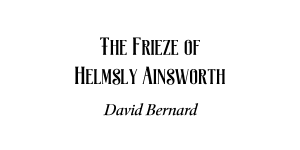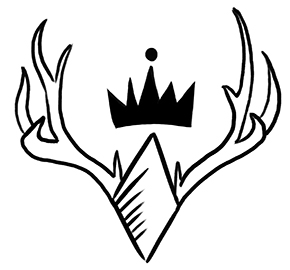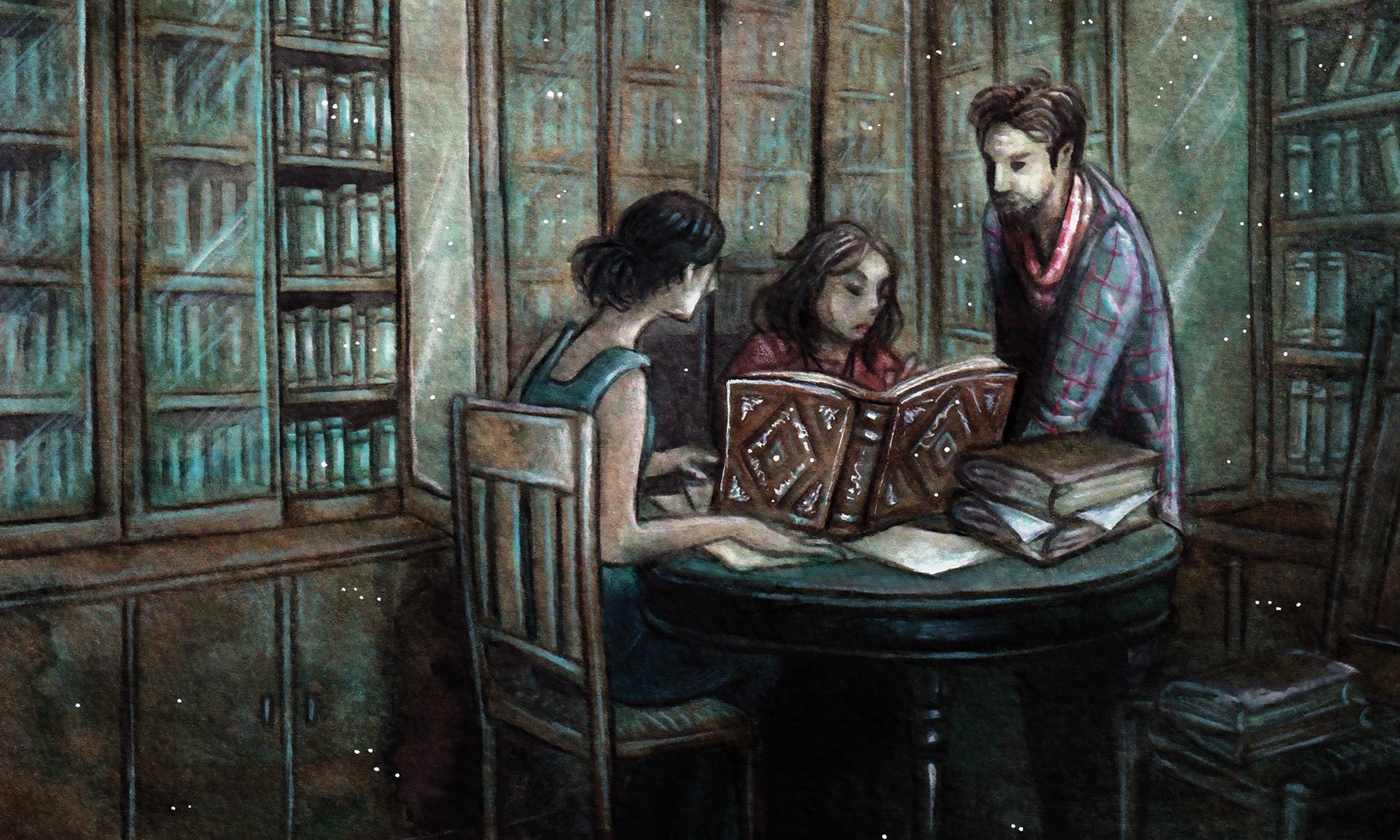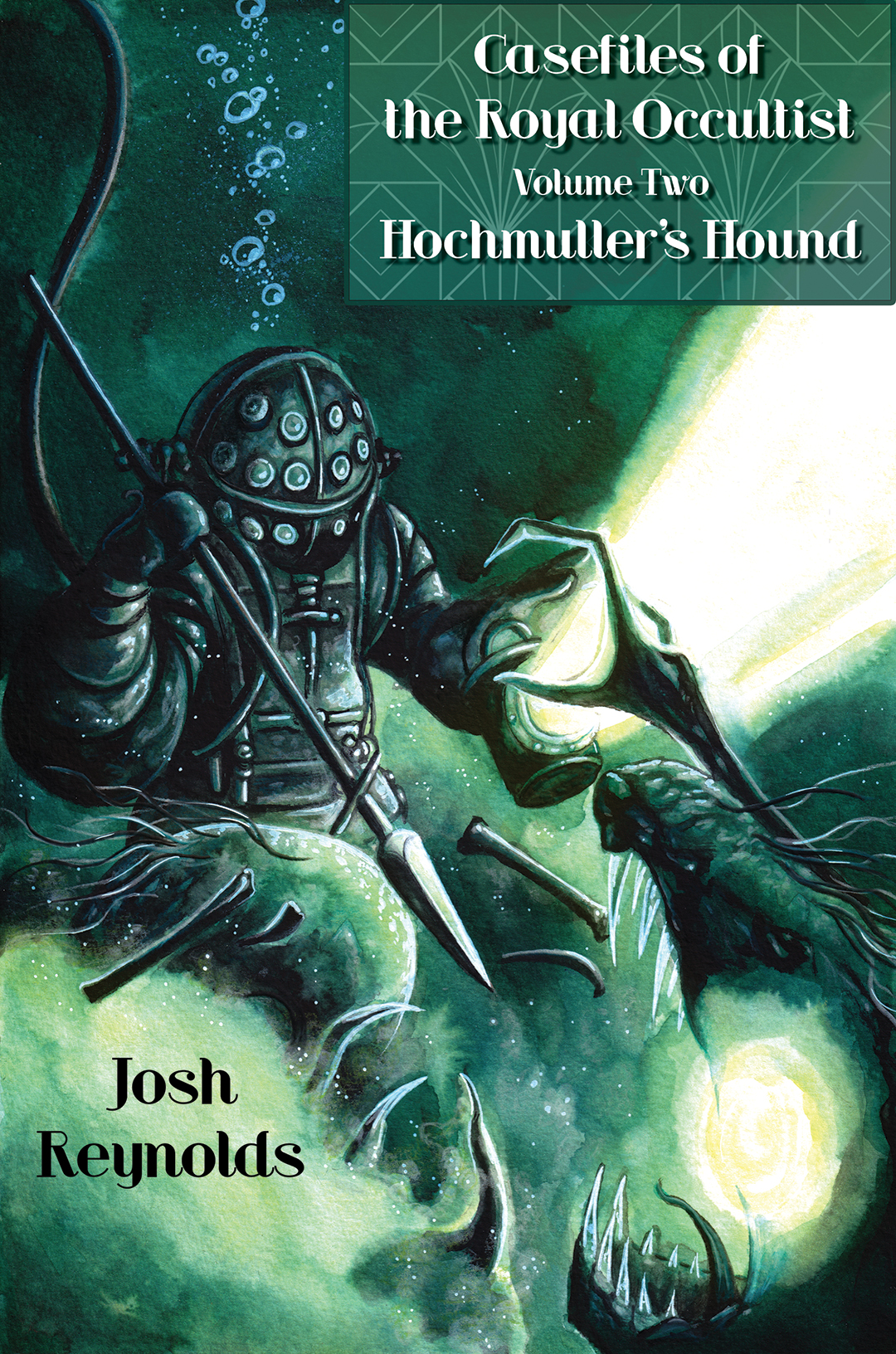
We’re pleased to present our next excerpt from The Chromatic Court – an exclusive look at David Bernard’s “The Frieze of Helmsly Ainsworth.”
EBOOK
18THWALL | AMAZON US | AMAZON UK

Helmsley Somerset Ainsworth III was a patron of the arts, but strictly on his own terms. He thrived on creating minor scandals in the overly-dramatic world of the arts, so much so that he had his business card updated to list his occupation as “Arts Provocateur.”
It was his personal opinion that, if one of the gallery showings he curated didn’t evoke some sort of a tempest in a teapot, it was a failure. Of course, he didn’t know when to leave well enough alone either. I have been his attorney since the previous firm chose to terminate the relationship in the wake of the riot in Seattle caused by his exhibit of the works of Enoch Coffin. In Helmsley’s terms, that made the show a tremendous success. The Seattle Police Department was more inclined to use terms like “public menace.”
My law practice was not sufficiently established to be refusing work from the deep pockets of Helmsley Ainsworth, so I carefully listened, dutifully pointed out the legal ramifications, and then spent copious amounts of my time and his money keeping him out of jail in the aftermath of his ignoring my counsel.
Helmsley’s current idea was to create an exhibition of bizarre stone sculptures, built around a collection of carved rocks he had purchased at an estate sale in a town beyond Sacramento called Auburn. I thought he overpaid for them. He merely waved his hand dismissively and suggested if I didn’t recognize the name of the sculptor (I didn’t), my level of culture was beneath contempt. As long as his monthly retainer check cleared the bank, he could accuse me of anything he wanted. He planned to exhibit this “Smith Collection” in San Francisco, but his reputation preceded him, and the only available space he could find was ten miles down the coast in Pacifica.
I had been negotiating, in vain, to obtain the loan of some stone figurine from an obscure institute outside of Santiago. Whatever it was, the institute was not going to loan it out. Ainsworth seemed unconcerned.
“I’m not surprised, Douglas,” he said, finishing off a bottle of white wine that cost more than two months’ rent on my office. We were dining at the Gallomo Club in a section of Los Angeles, way above my comfort level, both financially and socially.
“The Sanbourne academics are so dry as to be positively desiccated. For years, I have nearly single-handedly underwritten their budget for acquiring obscure books on folklore and religion. I shall simply stop my annual donation to the institution. And when they ask why, I will tell them. Either I will get the figurine for the next show, or I will be looking for a new institution to donate funds. I understand there’s a historical society up north of Boston that has some rather provocative gold jewelry.”
“So, I was able to secure insurance for the exhibit in Pacifica,” I said. “Apparently, there are still insurance agents who have not heard about the ‘incident’ at the Pickman exhibit last year.”
I poked at my lunch, something called a “snezhanka.” I had blindly ordered the cheapest thing on the menu, which turned out to be some sort of a cucumber salad covered in yogurt. It was still pricey enough to hope Helmsley was picking up the tab.
Helmsley sat back and motioned for the waiter. “Cancel that event, Douglas. I have something even more spectacular in mind,” the waiter arrived and Helmsley ordered a dessert that was not on the menu, something that sounded very French and accordingly expensive.
I was a little surprised by Helmsley canceling a show of his own accord. Usually, it took a court order.
“Are you sure, Helmsley? You have invested a sizable amount of money in setting up this exhibit.”
He waggled his hand at me dismissively. “What I have in mind is so bizarre and so unusual that even I have never even heard of anyone working in the medium. Douglas, my boy, I am talking about something so avant-garde that the so-called ‘cutting edge’ crowd might as well go back to finger painting mastodons on cave walls.”
Helmsley looked positively giddy. That usually meant additional billable hours for me. His dessert arrived, something that looked like a stack of flapjacks covered in a thick white syrup and gold leaf.
“Douglas, I know you’re terrified I’m going to make you cover the tab. Relax. I’m going to sit here and devour this mille-feuille and nurse a brandy of a vintage that would give your wallet a coronary. You can toddle back to your little office and pretend you’re not secretly in love with that delightful little secretary of yours. I’ll send you a list of requirement for the next venue. You can read it over and we’ll talk over lunch—and yes, my treat. You can ask the questions I know you’ll have. Remember, Douglas, we’re on the verge of artistic history! Now shoo, and let me digest.”
The packet from Helmsley arrived by courier later that afternoon. Stacy brought it into my office and looked at me questioningly. With more than a little trepidation, I started reading his requirements. Then I read them again. By the third time, I was sure I wasn’t hallucinating. I looked up at Stacy.
“You might as well go home. There are potential liability issues here that I didn’t think even existed. I’m going to have research this all night.”
“Can I help? I could order in Chinese.” Stacy looked at me. I would have preferred adoration, but merely saw sympathy.
I shook my head. “You’ll have enough to do in the morning. Helmsley Ainsworth has outdone himself. He wants to rent a cold storage warehouse to renovate for an exhibition of ice sculptures.”
Stacy cocked an eyebrow. “Ice sculptures? Seems a tad plebian for him.”
I shook my head. “Far, far worse. The artist is also a physicist. His medium is some rare gas mix, cooled down to a solid. Like dry ice, only colder and more expensive.”
“Of course,” she said, the sarcasm dripping. “And I get to find the warehouse for them.”
“Yes. But, on the bright side, the billable hours for that alone will cover your salary and the rent for the rest of the year.”
She sighed and headed to the door. “I’ll see you in the morning.”
I kept reading the notes. Half of it was scientific mumbo jumbo and the rest was a massive class action suit waiting to happen. I decided to email an old college buddy and ask him about some of the technical jargon. He actually worked in water chemistry or some arcane thing that required dodging alligators while wearing hip boots, but I didn’t have a lot of friends in the sciences. I went home. I had a feeling I would be sleeping in my office again soon enough.
I got to the office the next morning to find Stacy already on the phone. She did not look amused, so I assumed she was already looking for the warehouse. I just slipped into my office and spread out Helmsley’s notes and then overlaid them with mine. Helmsley’s new exhibit was a series of sculptures of people in historic costumes that he wanted to frame within a tableau made of ice. This frozen frieze (his term, not mine) was in a new medium never attempted before. Metal alloys were heated so hot that they melted, and then turned to gas. Then the gases were super-cooled into solid blocks of ice, which were then sculpted. This metallic gas-ice kept the colors properties of the metals, giving the work an iridescent, almost opal-like sheen.
The problem was keeping them cold. They needed to be kept so cold that the engineer that Helmsley had consulted was concerned that the building would be so frigid that it would make the support structure brittle—LA buildings were designed for earthquakes, not subzero temperatures. So, Helmsley’s architects came up with a plan to build a smaller, freestanding structure to enclose the statues. This smaller structure would keep the air around the statues at the deadly cold temperatures they required, and use the warehouse refrigeration system to keep the rest of the building just cold enough to “alleviate the temperature variation strain on the containment structure.” I barely understood anything other than it was really cold and insanely expensive. The interior design involved a lot of faux ice stalactites and manufactured snow. I didn’t care for the design, but at least I understood all the words.
My email to Florida got a reply and Pete knew me well enough to use small words. He explained that for copper to get so hot that it turns into a gas, as one example, it has to be heated to 4600°F. Iron needs to hit over 5200°F, and even higher for other metals. Then, to freeze the gas, it would have to be brought down to nearly absolute zero almost immediately. The part of the email that stood out was: “That’s not art, that’s science fiction. It’s a hoax of some sort. There are a handful of labs working in the absolute zero field and no one’s reached it yet. None of them would have the funds, inclination, or capacity to create large blocks of frozen gas on that scale.”
That made sense. I could easily see Helmsley’s enthusiasm leaving him vulnerable to a con man. The thought was interrupted by the booming voice of Helmsley Ainsworth himself in my reception area, acclaiming Stacy was the embodiment of Aphrodite. He burst into my office with a dramatic pose.
“Douglas McAvoy, why don’t you admit you adore Anastacia and marry her? I warn you that, if you don’t, I will steal her away from you and take her on a world tour of the most wicked and decadent places on Earth,” as he stepped inside and closed the door, I heard her snort.
“Are you ready for lunch, Douglas? There’s a new pop-up bistro in Beverly Hills I’ve been dying to try. They do traditional Italian cuisine in a wood-fired oven. They only burn cedar logs, imported from Lebanon, that have been cut by hand and then aged in hand-pressed, toasted sesame seed oil.”
“Sit down, Helmsley. I want to talk about this project,” I tried to sound professionally concerned, not bordering on panic.
“Let me guess, Douglas. You talked to some scientist who told you that the whole story is utter rubbish. I know.”
“You know?” he seemed pleased by the look on my face.
“Of course I know,” he scoffed. “The Ainsworth fortune was built in the steel industry. I know more than enough about smelting and alloys to make up nonsense when I need to. But Douglas, you have to see these statues. I’ve never seen anything like them. They’re magnificent. They are so detailed that you’d think that, if you touched them, it would be real fabric. Of course, if you did touch them, you’d get third-degree frostbite.”
“So,” I said, “they’re not really made of gas made of ice?” If Helmsley was pulling another extravagant backstory for the art crowd, I could deal with that.
“I have no idea what they are made of. I’m hoping that someone will challenge that tale and identify what they are. I might end up with egg on my face, but imagine the press when some egghead at Caltech calls me a liar. And if he can’t identify it, it generates even more press.”
He stood up. “Now, come along, Douglas. I would hate to see all that cedar being burned without my gustatory participation.”
Per usual, I ordered the cheapest thing on the menu, which was a white pizza. It was an okay pizza, but not a great pizza. The only thing the special wood added to was the price. Helmsley had a baked pasta in a white truffle marina. I don’t know what he paid for it, but they also sold the sauce at $1400 for a six-ounce jar.
I was beginning to suspect that Helmsley was dragging me to restaurants so he could be entertained by the look on my face when I saw the bill. I suspect the look was similar to the other tidbit he dropped on me on the drive back to my office. The engineering report was also total nonsense—the enclosure wasn’t to protect the statues from the visitors, it was to protect the visitors from the statues. Whatever they were made of, they remained so cold that not only did touching them cause severe frostbite, the statues never warmed up, let alone melted. The refrigerated storage warehouse as an art gallery? More Ainsworth theatrical staging. He wasn’t selling the art or charging admission, so it wasn’t legally fraud. I returned to my office, toting a $90 pizza for Stacy. She eyed it suspiciously.
“I found a location for Helmsley,” she said, gingerly picking up a slice. “It’s an old warehouse in foreclosure on the San Pedro side of the port, near the main channel. No active warehouse wants to lease space for Helmsley to set up an exhibition—Helmsley’s renovations and the crowds of art cognoscenti wandering around the facilities would just be too disruptive for their operations. I think he should just buy this one rather than rent it. The depreciation should cover the purchase in no time. And it’s likely the Port Authority will want to buy it with the next expansion.”
I looked at her. “You know, I keep forgetting you’re studying to be a tax lawyer.”
Very daintily, she dropped the half eaten slice in her waste can and handed me back the box. I didn’t have the heart to tell her she just tossed a $15 slice of pizza in the trash.
“I’ll call Helmsley,” I said. “If he likes the idea, I’m sure he’ll double the length of your decadent cruise.”
“Everyone keeps offering to take me away, and yet, here I sit,” she was still muttering as I closed the door. Helmsley was delighted with the idea and had me contact a realtor friend of his from his country club.
I kept researching fraud, to see if Helmsley was liable. Dinner was the rest of the pizza. Being cold did not improve the flavor. By the time I headed home, Stacy was long gone and I was developing heartburn. That night, undoubtedly thanks to my wise dinner choice, I had an odd dream.

I had no idea where I was, I stood at the base of a mountain of ice, gleaming white in the sun. There was nothing but a frigid wasteland in all directions as far as I could see. Suddenly the great ice mountain shuddered. A hissing voice echoed across the frozen peak.
“The worm awakens to the laughter of the Chromatic Court. Yikilth sets forth again and its journey is one of vengeance.”




